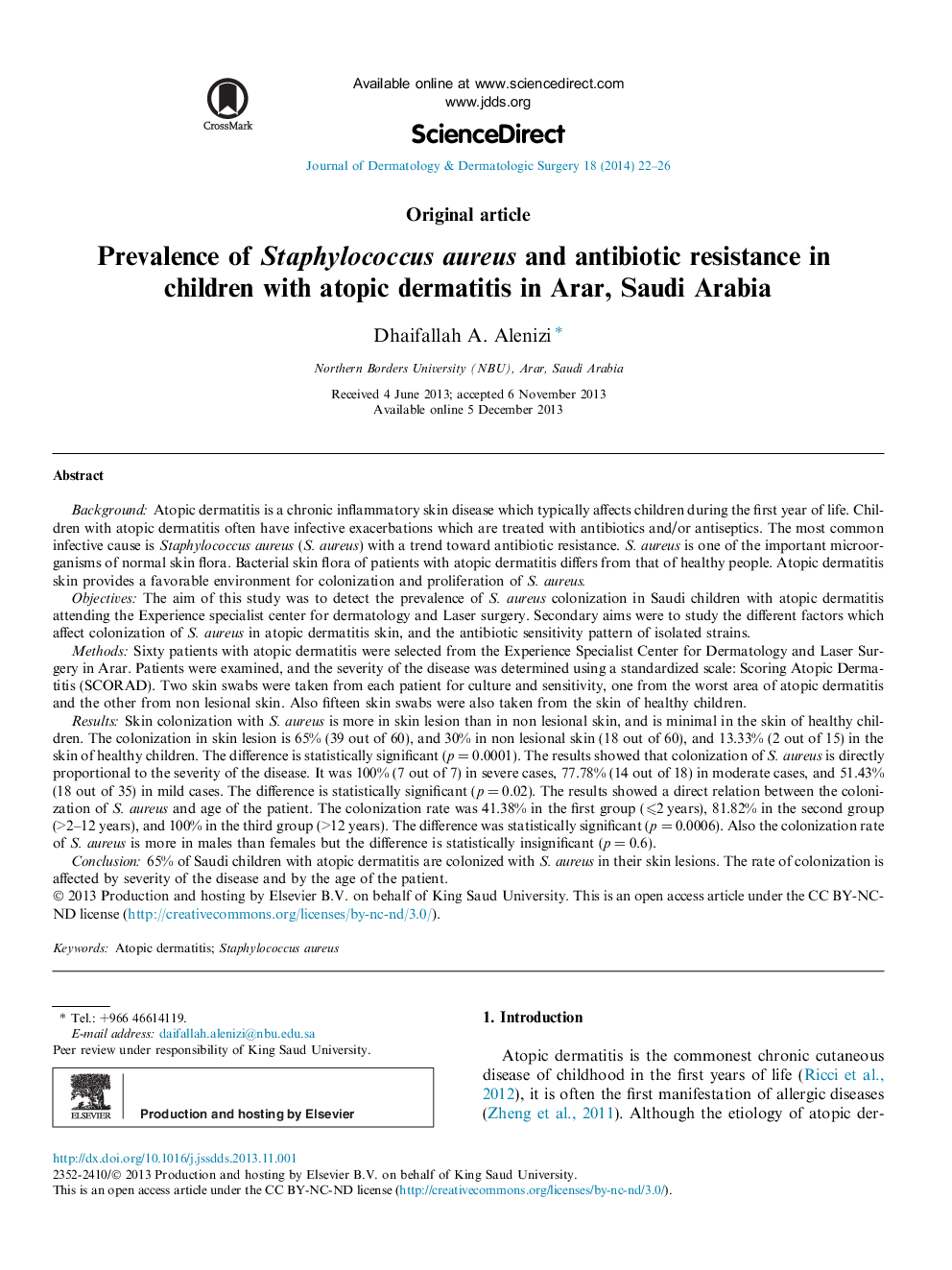| Article ID | Journal | Published Year | Pages | File Type |
|---|---|---|---|---|
| 3214737 | Journal of Dermatology & Dermatologic Surgery | 2014 | 5 Pages |
BackgroundAtopic dermatitis is a chronic inflammatory skin disease which typically affects children during the first year of life. Children with atopic dermatitis often have infective exacerbations which are treated with antibiotics and/or antiseptics. The most common infective cause is Staphylococcus aureus (S. aureus) with a trend toward antibiotic resistance. S. aureus is one of the important microorganisms of normal skin flora. Bacterial skin flora of patients with atopic dermatitis differs from that of healthy people. Atopic dermatitis skin provides a favorable environment for colonization and proliferation of S. aureus.ObjectivesThe aim of this study was to detect the prevalence of S. aureus colonization in Saudi children with atopic dermatitis attending the Experience specialist center for dermatology and Laser surgery. Secondary aims were to study the different factors which affect colonization of S. aureus in atopic dermatitis skin, and the antibiotic sensitivity pattern of isolated strains.MethodsSixty patients with atopic dermatitis were selected from the Experience Specialist Center for Dermatology and Laser Surgery in Arar. Patients were examined, and the severity of the disease was determined using a standardized scale: Scoring Atopic Dermatitis (SCORAD). Two skin swabs were taken from each patient for culture and sensitivity, one from the worst area of atopic dermatitis and the other from non lesional skin. Also fifteen skin swabs were also taken from the skin of healthy children.ResultsSkin colonization with S. aureus is more in skin lesion than in non lesional skin, and is minimal in the skin of healthy children. The colonization in skin lesion is 65% (39 out of 60), and 30% in non lesional skin (18 out of 60), and 13.33% (2 out of 15) in the skin of healthy children. The difference is statistically significant (p = 0.0001). The results showed that colonization of S. aureus is directly proportional to the severity of the disease. It was 100% (7 out of 7) in severe cases, 77.78% (14 out of 18) in moderate cases, and 51.43% (18 out of 35) in mild cases. The difference is statistically significant (p = 0.02). The results showed a direct relation between the colonization of S. aureus and age of the patient. The colonization rate was 41.38% in the first group (⩽2 years), 81.82% in the second group (>2–12 years), and 100% in the third group (>12 years). The difference was statistically significant (p = 0.0006). Also the colonization rate of S. aureus is more in males than females but the difference is statistically insignificant (p = 0.6).Conclusion65% of Saudi children with atopic dermatitis are colonized with S. aureus in their skin lesions. The rate of colonization is affected by severity of the disease and by the age of the patient.
